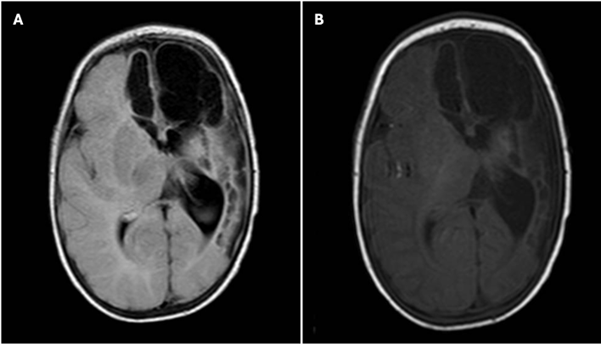Efetividade do Método Therasuit no Manejo da Encefalopatia Crônica Não Evolutiva: Relato de Caso em Pediatria
Conteúdo do artigo principal
Resumo
A paralisia cerebral (PC) é uma condição neurológica não progressiva que afeta a capacidade motora e postural, resultante de uma lesão cerebral estática. A intervenção precoce e intensiva de fisioterapia pode promover melhorias significativas na funcionalidade e qualidade de vida dos indivíduos afetados. Este relato de caso destaca uma menina com quadriparesia espástica nível IV segundo a GMFCS, evidenciando a evolução clínica e os benefícios de uma abordagem fisioterapêutica intensiva desde os primeiros meses de vida. A paciente iniciou fisioterapia aos três meses de idade, com sessões de duas a cinco vezes por semana. A função motora grossa foi avaliada utilizando a escala Gross Motor Function Measure (GMFM), além da análise qualitativa de vídeos e registros de progresso. Com o acompanhamento fisioterapêutico intensivo, a paciente mostrou melhorias significativas em suas habilidades motoras, incluindo engatinhar, sentar-se sem apoio e transferir posições de forma independente. Este caso ilustra o impacto positivo da intervenção fisioterapêutica precoce e intensiva em crianças com paralisia cerebral. Ressalta a importância do acompanhamento contínuo adaptado às necessidades individuais, enfatizando a capacidade de neuroplasticidade e a melhoria funcional alcançada.
Detalhes do artigo

Este trabalho está licenciado sob uma licença Creative Commons Attribution 4.0 International License.
Authors retain the copyright of their articles and grant the journal the right of first publication under the Creative Commons Attribution (CC BY) license, which allows others to share and adapt the work with proper attribution.
Referências
Christy JB, Chapman CG, Murphy P. The effect of intense physical therapy for children with cerebral palsy. J Pediatr Rehabil Med. 2012;5(3):159–170. doi: 10.3233/PRM-2012-0208.
Jensen A. Cerebral palsy - brain repair with stem cells. J Perinat Med. 2022;51(6):737–751. doi: 10.1515/jpm-2022-0505.
Albright AL. Spasticity and movement disorders in cerebral palsy. Childs Nerv Syst. 2023;39(10):2877–2886. doi: 10.1007/s00381-023-06045-5.
Furtado MAS, Ayupe KMA, Christovão IS, Sousa Júnior RR, Rosenbaum P, Camargos ACR, Leite HR. Fisioterapia em crianças com paralisia cerebral no Brasil: uma revisão de escopo. Dev Med Child Neurol. 2022;64(5)–e12. doi: 10.1111/dmcn.15094.
Almeida KM, Fonseca ST, Figueiredo PRP, Aquino AA, Mancini MC. Effects of interventions with therapeutic suits (clothing) on impairments and functional limitations of children with cerebral palsy: a systematic review. Braz J Phys Ther. 2017;21(5):307–320. doi: 10.1016/j.bjpt.2017.06.009.
Belizón-Bravo N, Romero-Galisteo RP, Cano-Bravo F, Gonzalez-Medina G, Pinero-Pinto E, Luque-Moreno C. Effects of Dynamic Suit Orthoses on the Spatio-Temporal Gait Parameters in Children with Cerebral Palsy: A Systematic Review. Children (Basel). 2021;8(11):1016. doi: 10.3390/children8111016.
Martins E, Cordovil R, Oliveira R, Pinho J, Diniz A, Vaz JR. The Immediate Effects of a Dynamic Orthosis on Gait Patterns in Children With Unilateral Spastic Cerebral Palsy: A Kinematic Analysis. Front Pediatr. 2019;7:42. doi: 10.3389/fped.2019.00042.
Baptista PPA, Furtado ACA, Fernandes TG, Freire Júnior RC, Lima CFM, Mendonça ASGB. Positive impact of the Therasuit method on gross motor function of children with autism spectrum disorder: Case series. Front Neurol. 2023;14:1254867. doi: 10.3389/fneur.2023.1254867.
Bailes AF, Greve K, Schmitt LC. Changes in two children with cerebral palsy after intensive suit therapy: a case report. Pediatr Phys Ther. 2010;22(1):76–85. doi: 10.1097/PEP.0b013e3181cbf224.
Martins E, Cordovil R, Oliveira R, et al. Efficacy of suit therapy on functioning in children and adolescents with cerebral palsy: a systematic review and meta-analysis. Dev Med Child Neurol. 2016;58(4):348–360.
Alagesan J, Shetty A. Effect of modified suit therapy in spastic diplegic cerebral palsy – a single blinded randomized controlled trial. Online J Health Allied Sci. 2010;9(4):14.
Mélo TR, Yamaguchi B, Chiarello CR, Szczypior Costin AC, Erthal V, Israel VL, et al. Intensive neuromotor therapy with suit improves motor gross function in cerebral palsy: a Brazilian study. Motricidade. 2017;13(4):54–61. doi: 10.6063/motricidade.13699.
